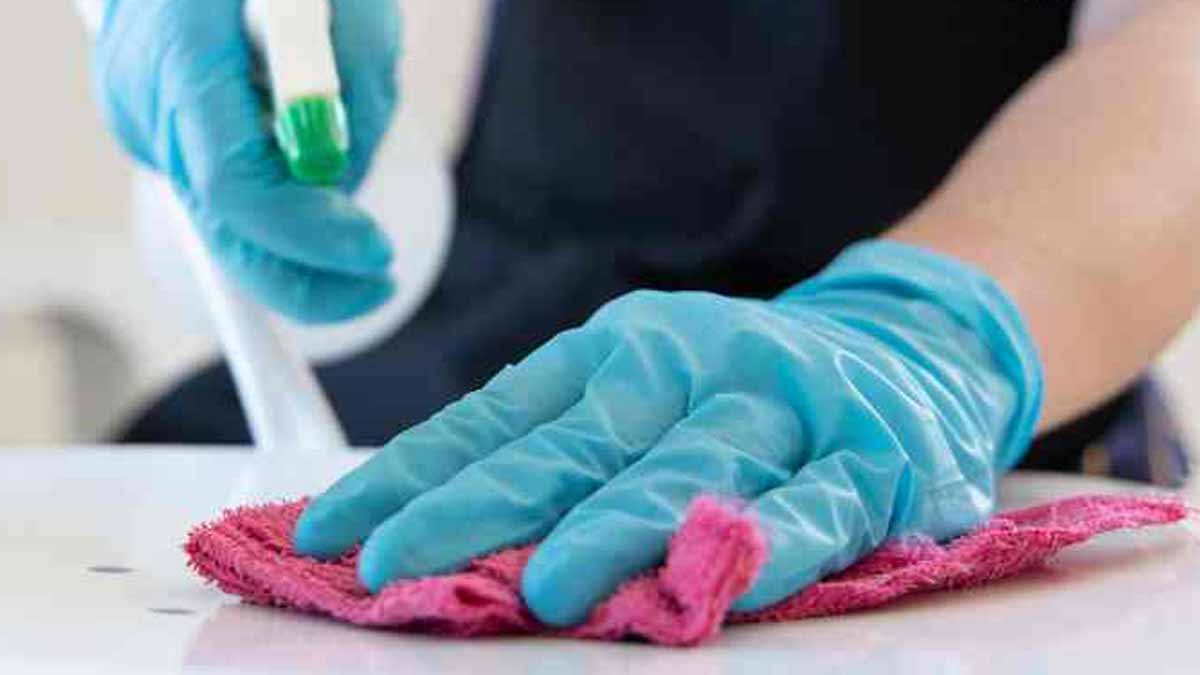You touch it while your mind is on dinner, then again as you rush for a towel. The habit feels harmless, yet it quietly seeds germs where hands gather. In the bustle of a busy kitchen, one small surface collects what cooking leaves behind, and because routines skip it, the grime stays—and spreads. The place looks clean, the countertop shines, the sink drains fast, yet this zone keeps getting ignored. People flip, press, and move on, while unseen residue builds day after day.
The most touched surface you forget daily
Light switches take fingerprints all day, especially during meal prep, yet they slip past most cleaning plans. Busy hands move from ingredients to controls without pause, leaving tiny traces. Because nearly everyone at home uses them, they become shared points where microbes settle, survive, and circulate. They look clean, so people overlook them.
After raw chicken, after rinsing greens, after opening trash, a thumb finds the switch by habit. Nobody notices, because the mark looks invisible, and the plate seems dry. Invisible residue clings, then waits for the next touch, linking people and tasks without consent. Each quick flip strengthens that chain and widens exposure.
Bathrooms get credit for caution, yet food spaces demand equal care. In a busy kitchen, the same attention belongs on each frequently touched control as on sinks and counters. Ignoring small, high-traffic surfaces allows a flow of contamination that later reaches knives, towels, and plates. That flow seldom pauses, so risk accumulates between deep cleans.
How germs spread across your kitchen with every flip
Think through one session of meal prep and the chain appears. Hands portion meat, crack eggs, and rinse greens; then a finger taps the switch. In a busy kitchen, the surface receives moisture, oils, and tiny food residues, which then wait for the next person. The pause is brief, yet transfer is real.
Cross-contamination starts small and scales when several people cook. One person handles poultry, a second chops herbs, a third checks the oven, yet all share the same control. Traffic is constant, so whatever one person deposits, another collects within minutes, and then carries onward to tools. Shared controls quietly link tasks people assume are separate.
Dozens of touches each day build layers the eye cannot see. Research on frequently touched household surfaces shows microbial loads can match a cutting board used after raw meat. That comparison surprises many, yet it fits how often hands find switches during cooking and cleanup cycles. Without focus, buildup outruns casual wipe-downs.
Real risks and smart habits that cut illness
Pathogens such as E. coli and Salmonella can persist on smooth plastics for days. Warmth, moisture, and traces of organic matter make survival easier, especially after frying or boiling. When a surface stays uncleaned, populations multiply, which then increases the chance that someone transfers microbes back to food. A single evening of cooking can seed a stubborn film.
Research comparing frequently touched spots with cutting boards used for raw meat shows similar microbial ranges. That parity shocks many people, yet it aligns with constant traffic and quick, distracted touches. Because hands often move faster than judgment, a precaution helps: wipe touchpoints before prep, and wash hands before controls.
Those small actions cost seconds, yet they break chains that otherwise run through meals. In the heart of the kitchen, routine attention to switches, handles, and buttons blocks the loop that spreads contamination. Placed early in prep, these habits protect children and older adults, who feel foodborne illness more severely.
A weekly kitchen routine that is simple and safe
Set a weekly schedule for switches and stick to it. That cadence gives enough time for germs to grow, yet it stops dangerous buildup. For kitchen controls, plan the task before prep starts; by building it into habit, you block cross-contamination rather than chasing it. Keep wipes within reach so the step never gets skipped.
Use a microfiber cloth dampened with a mild disinfectant. Do not spray liquid directly onto electrical parts, because pooled moisture risks damage. Wipe the switch and plate, then focus on textured edges. Cotton swabs reach crevices and seams that cloth misses, removing clingy residue from tight corners and screw heads.
Finish by drying all surfaces to reduce moisture, which supports regrowth. Prefer a simple alternative if you avoid chemicals: equal parts water and white vinegar work well. The mix cuts grease while it disinfects, so it leaves no harsh smell near food, and no sticky film. That balance makes upkeep sustainable, even on busy nights.
Clean habits today build safer meals and healthier homes
Keep the weekly switch clean, and the rest follows. Touchpoints stop serving as silent carriers, while food prep stays focused, tidy, and safer. The routine takes minutes, so motivation lasts, and the payoff grows. Families notice fewer sick days, stronger confidence, and smoother cooking rhythms in the kitchen. What looks simple, done consistently, becomes a powerful shield that protects every shared meal. Start this week, repeat next week, and anchor the habit for good.
